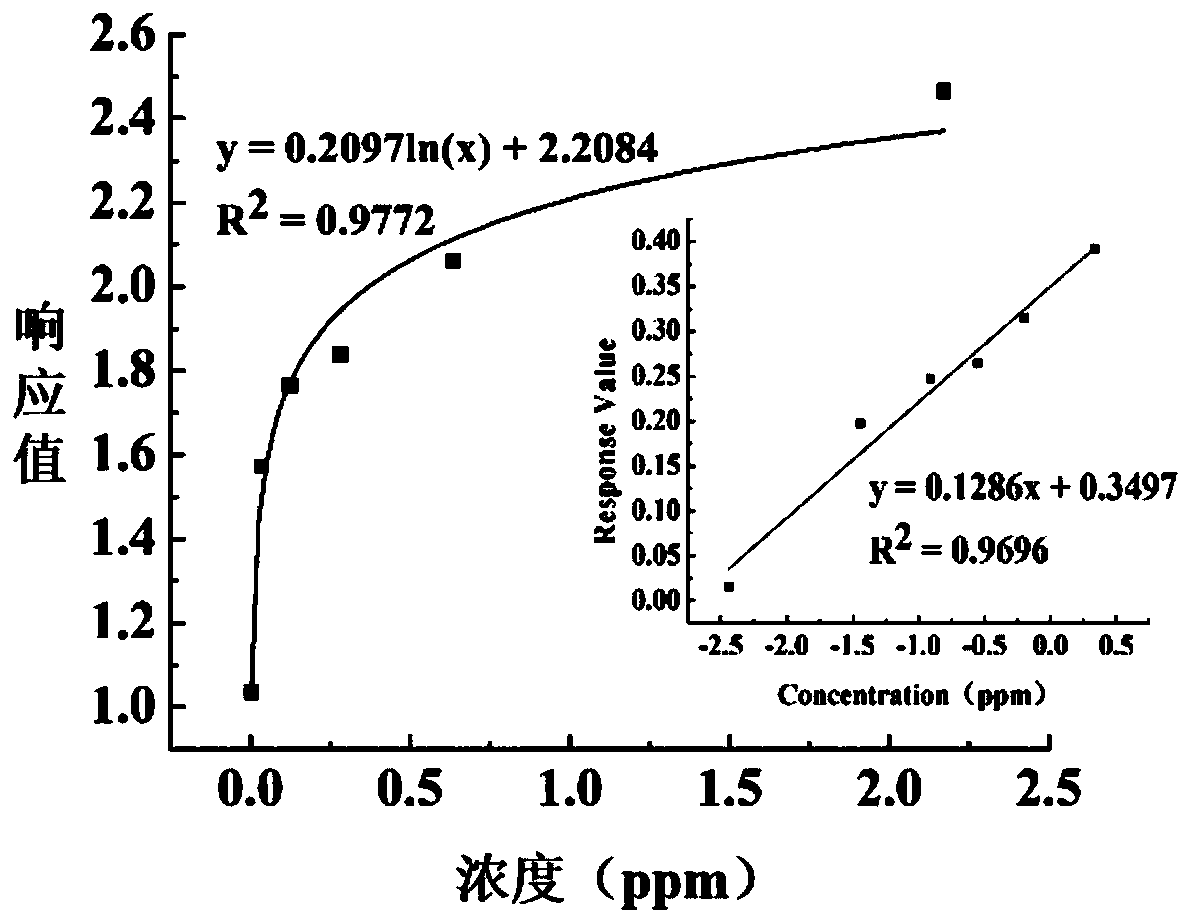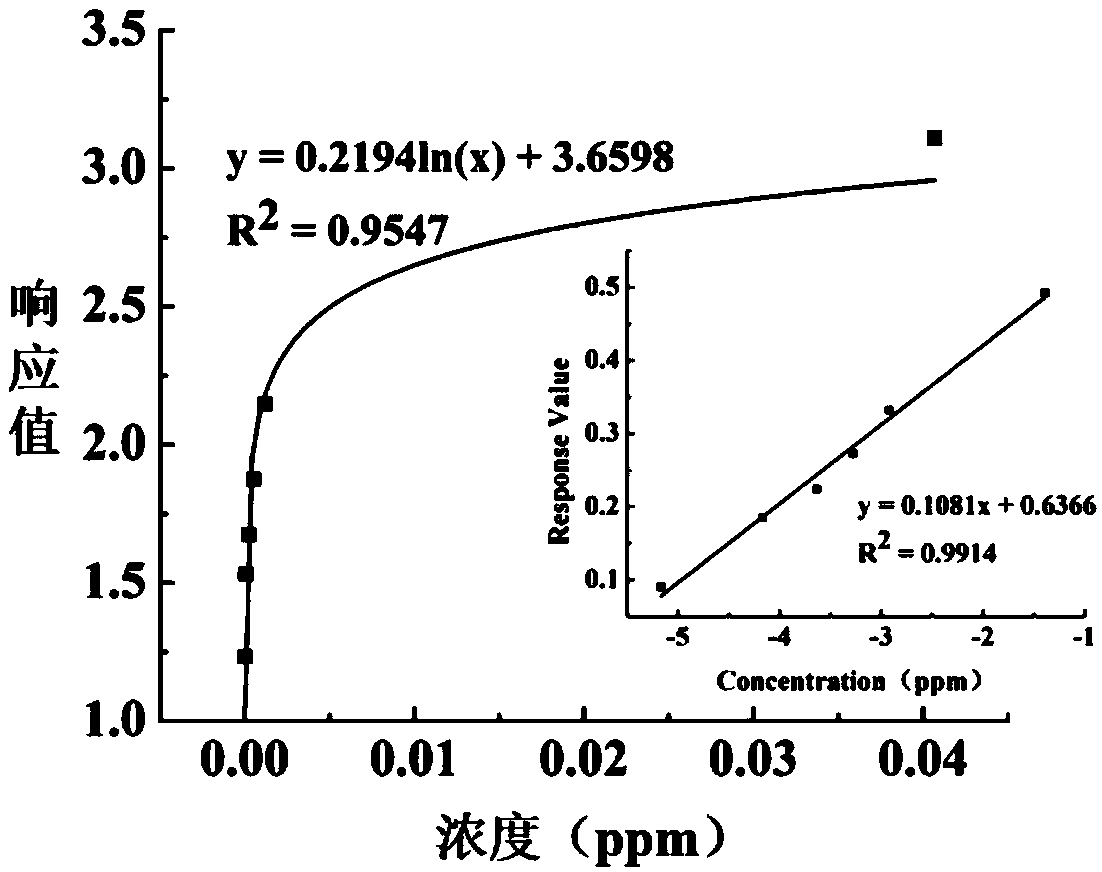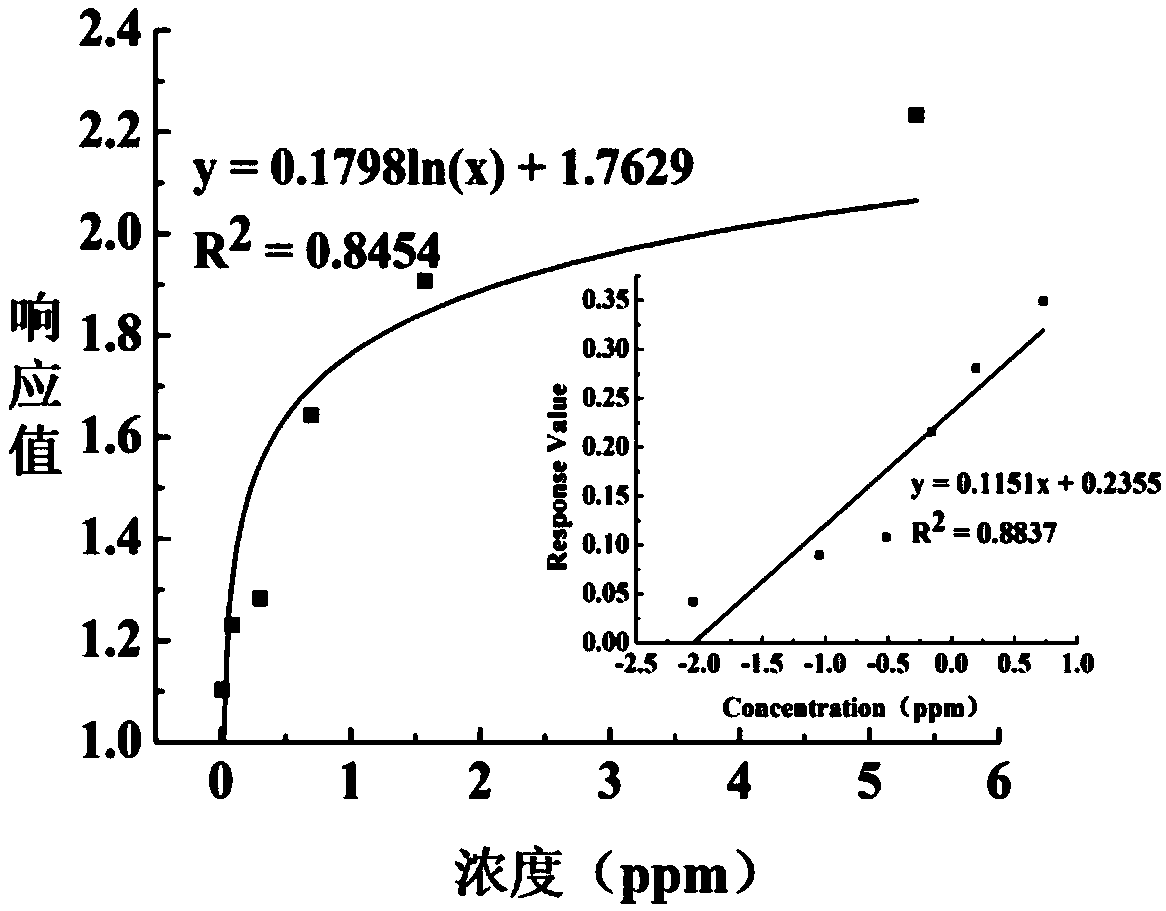Air odor intensity grade detection method based on electronic nose
A strength level, electronic nose technology, applied in the direction of measuring devices, analyzing gas mixtures, gas analyzer structure details, etc., can solve problems such as difficulty in widespread popularization, respiratory system damage, olfactory nervous system disorder, etc., to reduce personnel and time The effect of investment, reducing potential safety hazards, and accurate results
- Summary
- Abstract
- Description
- Claims
- Application Information
AI Technical Summary
Problems solved by technology
Method used
Image
Examples
Embodiment 1
[0027] Step 1. Sniffers use the three-point test method to evaluate the intensity level of five standard odor gases: ammonia, carbon disulfide, hydrogen sulfide, methyl mercaptan and trimethylamine. Each standard odor gas is divided into 0 according to the concentration from low to high. , 1, 2, 3, 4 and 5 have a total of six intensity grade standards, so as to determine the intensity grades of five standard odor gases are shown in Table 1.
[0028] Table 1 Intensity rating table of five standard odor gases
[0029]
[0030] Step 2. According to the strength grade standard obtained in the above table, prepare six standard strength grade test samples of ammonia, carbon disulfide, hydrogen sulfide, methyl mercaptan and trimethylamine respectively.
[0031] Step 3. Turn on the electronic nose device, and use all the metal oxide sensors in the electronic nose to detect the six standard intensity level test samples of the five odorous gases obtained in step 2 respectively, and o...
Embodiment 2
[0043] Since the standard odor gas intensity level standard and sensor screening have been determined in Embodiment 1, this embodiment can be used directly.
[0044]Step 1. Use S1, S2, S4, S7 and S8 sensors as the electronic nose detection sensors of the air odor intensity level, turn on the electronic nose device, and obtain the electrons of the five detection sensors of the electronic nose for the five standard odor gases in the air sample 2 respectively. Nasal response value.
[0045] Step 2. Substitute the response values of the five detection sensors of the electronic nose obtained in step 1 into Table 3 of Example 1, calculate the concentrations of the five standard odor gases in the air, and then calculate the concentrations of the five standard odor gases according to the calculated See Table 1 of Example 1 to obtain the intensity levels of five standard odor gases in Air Sample 2, and the test results are shown in Table 5.
[0046] Table 5 Test result table of air ...
PUM
 Login to View More
Login to View More Abstract
Description
Claims
Application Information
 Login to View More
Login to View More - R&D
- Intellectual Property
- Life Sciences
- Materials
- Tech Scout
- Unparalleled Data Quality
- Higher Quality Content
- 60% Fewer Hallucinations
Browse by: Latest US Patents, China's latest patents, Technical Efficacy Thesaurus, Application Domain, Technology Topic, Popular Technical Reports.
© 2025 PatSnap. All rights reserved.Legal|Privacy policy|Modern Slavery Act Transparency Statement|Sitemap|About US| Contact US: help@patsnap.com



